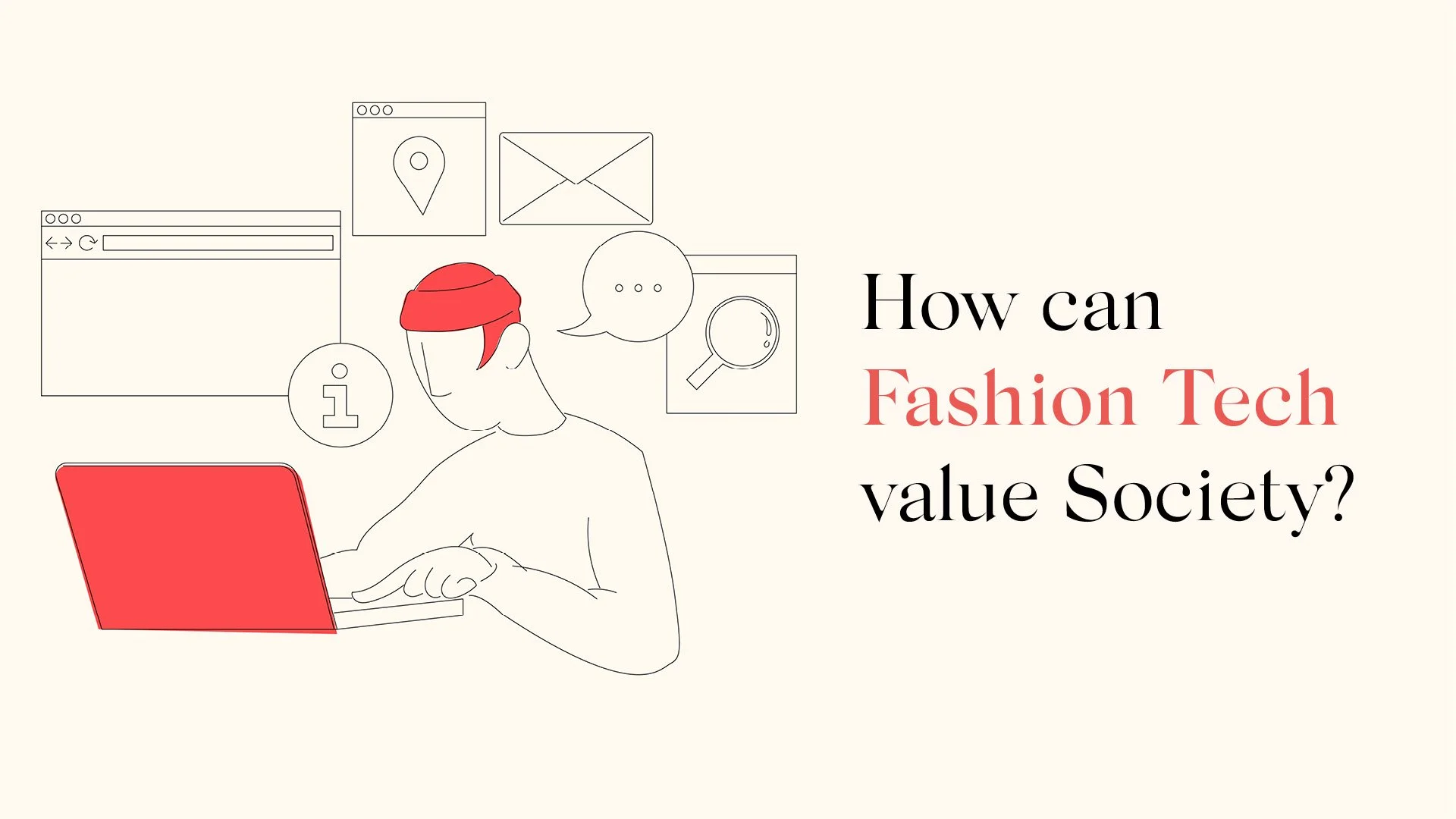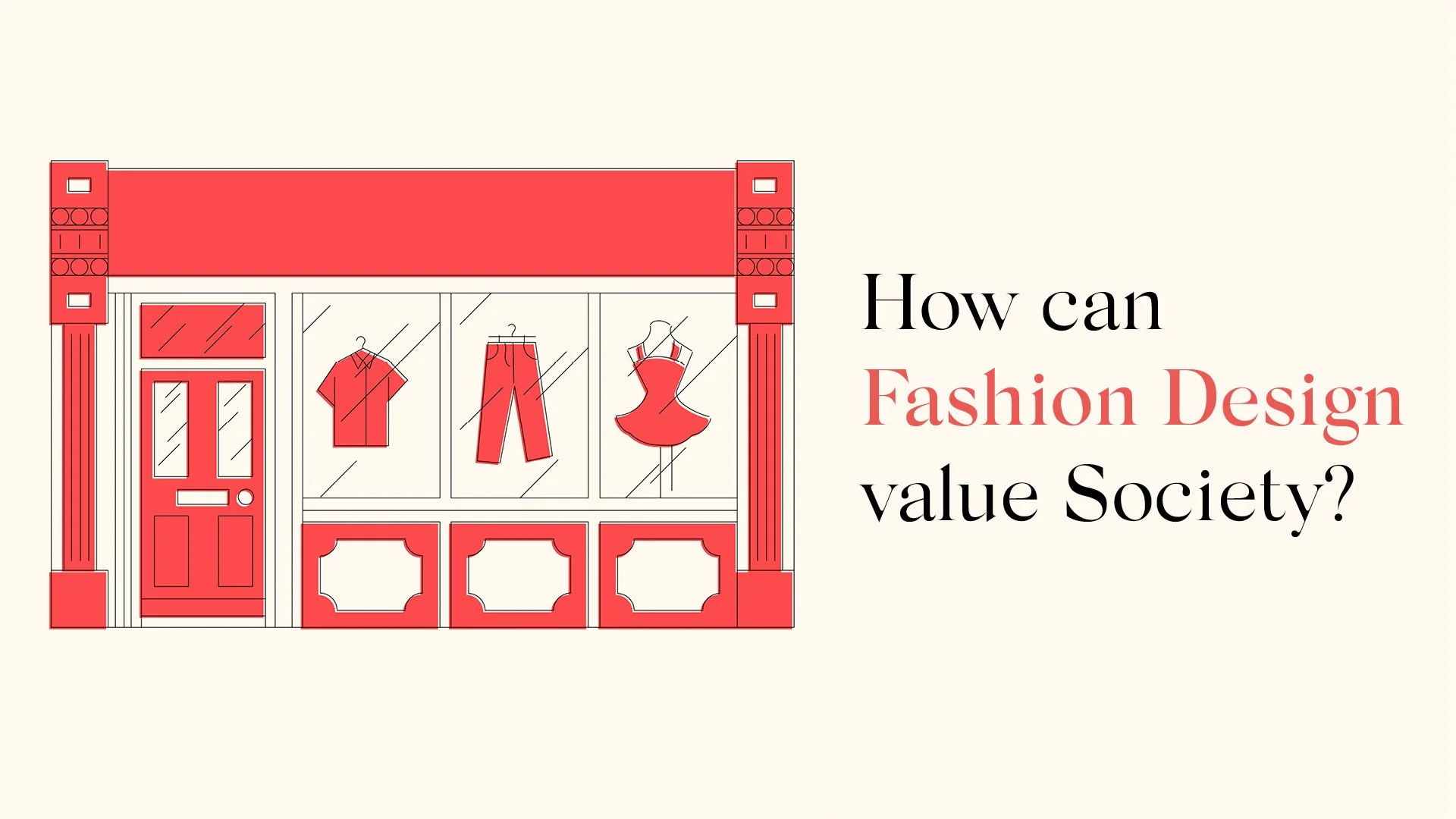Fashion Values Society: Media, Design & Tech
Fashion Values Society: Media
Watch the Fashion Values Media Webinar on our YouTube channel.
This webinar explores the question of "how can fashion media value society?", chaired by Monica Buchan-Ng, and features the below panelists:
Rachel Arthur - UN Environment Programme
Johannes Reponen - Condé Nast College of Fashion & Design
Melenie Hecker - The Stitch | Fashion Values 2021 Finalist
Lilian Weiermann - The Stitch | Fashion Values 2021 Finalist
Summary & Key Takeaways
Hosted by Monica Buchan-Ng, with a panel of experts including Rachel Arthur from the UN Environment Programme, Johannes Reponen from Conde Nast College of Fashion & Design, and Fashion Values 2021 finalists Melenie Hecker & Lilian Weiremann who founded their sustainable fashion platform The Stitch.
With such a range of experiences, our panellists offered some refreshing perspectives when considering the question; ‘how can fashion communication better value society?’. Rachel shared her thoughts on how advocacy is a key driver in creating value in fashion, and that media can be the platform through which this advocacy is communicated. The nature of fashion media itself ,how it can be harnessed and the re-imagining of fashion values was a common theme throughout the conversation, echoed by Melenie and Lilian, who suggest that storytelling and the right narrative can pave the way, fostering a positive culture amongst those who participate in fashion. Johannes offered critical perspective on how current fashion media functions and made an important point of how fashion journalism is linked to the assumption that it's sole purpose is to sell fashion to the consumer; fashion media is in essence, the machine that makes fashion. The current tone of fashion media is one of urgency; capturing the latest trends as quickly as possible. However, it was then remarked on how this language and tone could be re-imagined to communicate the values we want to see established in the mainstream fashion conversation.
The panellists delved deeper into what this imagined future for fashion media could look like, and what would be critical in achieving this. One challenge that particularly resonated was around data and numbers. There is endless numerical data that speaks to the sustainability issues in fashion, however the panellists considered how this is often hard to digest or conceptualise as a reader, which is why storytelling is importantinbringing this data to life to make it more tangible. On the topic of changing narrative, it was suggested that making the language of fashion media more inclusiveis imperative. Moving focus away from big fashion houses and names to include more stories of the fashion process and those within it gives readers the confidence that we can all be changemakers in fashion; it is not an exclusive, hierarchical club.
The discussion concluded with some key learnings the panellists had for fashion communicators who want to make change in the industry. The need for new, hopeful visions for the future, changing the cultural narrative, asking the important questions and applying the pressure to change were suggested. Overall, the importance of empathy, collaboration and inclusivity in the media to embed societal value into the current culture was the lasting message.
Fashion Values Society: Tech
Watch the Fashion Values Tech Webinar on our YouTube channel.
This webinar explores the question of "how can fashion tech value society?", chaired by Nina Stevenson (Centre for Sustainable Fashion) and features the below panelists:
Frederica Brooksworth - Council for International African Education
Youwie Roes - Eyes on Talents
Summary & Key Takeaways
This webinar focused on technology and was hosted by Nina Stevenson (CSF). Joining her on the panel were Frederica Brooksworth from the Council for International African Fashion Education, and Youwie Roes from Eyes on Talents (Fashion Values Partner).
Responding to ‘how can fashion technology value society? ’the two panellists were in agreement on a key point in particular; that technology needs to be accessible and inclusive. Thinking of the work at Eyes on Talents, Youwie spoke of how technology needs to be able to reach and include everyone if it wants to truly value society. Eyes on Talents are a digital database that connects talent with fashion brands, allowing for global networking without boundaries. Frederica echoed this sentiment with her thoughts on how technology needs to remove boarders and open opportunity for fashion education to everyone. It was her position that research and education in fashion rely on technology being accessible, therefore taking a ‘digital first’ approach is paramount in enriching society with the required, relevant information.
When discussing accessibility and inclusivity, the conversation explored issues of decolonising fashion and technology in order to achieve these aims. It was noted that technology is an arena predominantly controlled by the West, which needs to change in order to prioritise inclusivity. The panellists emphasized the need to bring diverse voices into fashion tech in order to allow for more diverse experiences and cultural thinking. Drawing on her experiences at the Council for International African Education, Frederica remarked that fashion education is a key pillar of a socially just fashion system, and technology is key to making this accessible to people. However, she followed this with the fact that at present, there are still many regions which do not have access to this, particularly in Africa, therefore this is something that needs to be addressed in order to achieve equity.
The panellists were invited to share their advice on what tech innovators can focus on in order to better value society in fashion. A critical point was made here on how technology is such a broad area, therefore there is so much scope for innovators to harness opportunities within this arena. There is no ‘one size fits all’ model for technology, which opens the door to great opportunity, however the panellists noted how this can present challenges which innovators should be aware of. For example, Frederica remarked on how technology is climate based, in the sense that what may work for one region may not be applicable to another, due to the difference in technological advancement. Innovators need to identify what is relevant for different areas and what sort of tech makes sense. It is easy to get caught up in the excitement of the conversations in emerging technology e.g. the metaverse, but we need to understand whether they are relevant for the changes we’re trying to make in society. Innovators need to find the confidence and intuition to know what should be utilized and when, and should not be afraid of continuing to optimise old technologies if it transpires that they work best in a certain climate.
Fashion Values Society: Design
This webinar explores the question of "how can fashion design value society?", chaired by Dr Francesco Mazzarella (Centre for Sustainable Fashion) and features the below panelists:
Pauline Pigott - Kering
Yayra Agbofah - The Revival
Ellen Rock - Print Designer
Summary & Key Takeaways
Hosted by Dr Francesco Mazzarella (CSF), who’s research explores ways in which design activism can create counter narratives towards sustainability in fashion. Francesco was joined by Pauline Pigott, Sustainability Project Manager from Kering, a core partner of the Fashion Values Programme, as well as social entrepreneur Yayra Agbofah from The Revival and print designer Ellen Rock.
Panellists were invited to consider the opening question of ‘how can fashion design value society?’. Pauline started the discussion by highlighting that the fashion industry currently represents 75 million people worldwide, which is why it is critical to approach sustainability from the social aspect as much as the environmental. Yayra furthered this point, suggesting that ‘society’ encapsulates so much more than just people, stressing the importance of this being at the forefront of design. The discussion considered that design is for an audience, for a target market, therefore it is important to communicate where you come from and what you stand for through this practice. Ellen offered an interesting lens on the value found in global artist residencies in design, and how physically occupying a space amongst other artisans can allow for a strong cultural narrative to be built and be expressed through one's work. On the topic of inclusivity and collaboration, Ellen also commented on how design should have a universal language that everyone can understand and interpret.
The conversation offered similar but also complimentary insights, which led on to the discussion of what fashion designers could focus on in order to activate social change. Two keythemes were identified here: process and purpose. Firstly, in order to activate social change, designers need to assess the state of their current supply chain processes. As Pauline noted, activation happens from upstream to downstream, and by measuring impact in the supply chain, designers can investigate whether their processes are ethical, support fair wages and gender parity and are socially inclusive. Secondly designers need to consider their purpose; why do they want to design and what do they want to design for? From Yayra’s perspective, the reason why we are facing so many issues in the fashion industry is because it’s purpose is in the wrong direction. Echoing Pauline’s remarks, he suggested that purpose needs to include community and the people, it needs to run from ideation to the end process. Additionally, Ellen’s advice to designers was to not get lost in technology. She stressed the importance of ensuring that cultural hand traditions and processes are not lost for the sake of prioritising advancing technology and proposed that research into cultural practices would be useful in learning how to embed them into fashion design practice.
Conclusions
Ultimately, the discussions across the webinars show how broad the scope is for exploring how fashion can better value society. The individual experiences of the panellists allowed for contrasting and complementary perspectives, however, there is one key message that appears to speak loudly throughout around the need for diversity and inclusivity in fashion. The discussions often find their way back to this topic, with panellists expressing its importance and offering pathways through which this can be brought into the fashion arena and harnessed for societal good. What is evident here is that for fashion to truly value society, everyone in the global society needs equal access, opportunity and expression, whether that be from the lens of media, design or tech. Fostering a culture of equity and diversity in fashion will be a key driver in transforming the current system into a just one.



